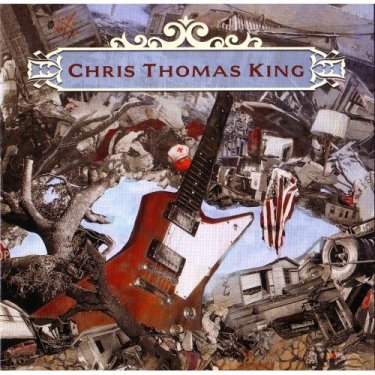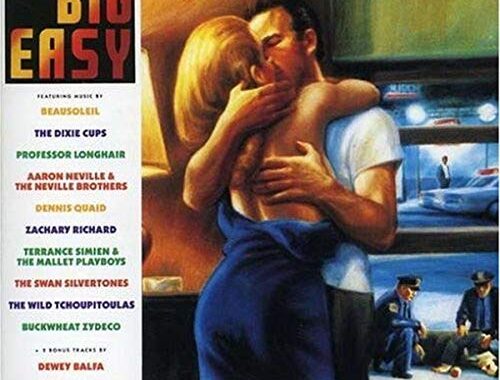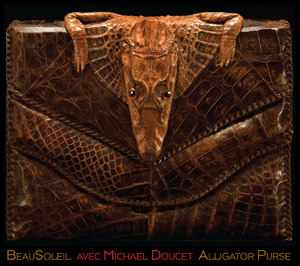A Year Since Katrina
Here comes the one year anniversary of Katrina. Tuesday, August 29th marks one year since the storm hit the Gulf Coast, and set off a chain of events – natural and unnatural – that caused devastation to the region.
I watched the first half of Spike Lee’s documentary, When the Levees Broke, last week on HBO. Talk about feeling sick to your stomach all over again. Then I read in the NYT today about the influx of politicians to the area this week to – yes – politicize the tragedy. The Democrats there to point fingers at the Bush Administration and the Republicans, and their seeming incompetence in responding to the tragedy; and W. and the GOP on site to point out the successes so far in the reconstruction effort. No fly overs in Air Force One this time…

To be fair, positive steps have been taken, but there’s obviously a long way to go. And fact is, all of the wonderful politicians in town this week for their staged events and photo ops will be cleared out by week’s end. And large swaths of New Orleans and the Gulf Coast will sit,
untouched since the storm, waiting for the help they so desparately need.

So let me turn to the music. Chris Thomas King is a blues artist from southern Louisiana (you’ve also seen him in O Brother Where Art Thou and Ray). I saw him perform in Telluride just three weeks after Katrina (I took that pic above @ the festival). He had lost most of his equipment in the floods, so was using new and borrowed equipment. He played a song which had made its debut a few days earlier on a nationwide televised relief broadcast. It’s called “What Would Jesus Do?”, and points out the incompetencies and injustices found in the aftermath of Katrina. The song is also found on King’s latest CD, Rise, which was released earlier this summer.
Chris Thomas King: What Would Jesus Do? (mp3) – Please support Chris by buying the song and/or album on iTunes, eMusic, Amazon (or wherever). You can check out his official web site here.
Here are a couple of Aaron Neville tunes I posted last year soon after Katrina.
Aaron Neville:
Louisiana 1927 (mp3) – original post from last year | Aaron’s version of a Randy Newman song about the 1927 Louisiana flood. Its lyrics fit right into the present day situation. From Warm Your Heart.
St. Jude’s Hymn (mp3) – original post from last year | “St. Jude’s Hymn” was sent to me by a reader (William) last year. I thought I would repost his moving and thorough background of the song. You can buy Midnight at St. Jude’s here.
On the edge of what used to be the notorious Storyville section of New Orleans, a short walk from the famous St. Louis #1 Cemetery, rests a small and beautiful church, Our Lady of Guadalupe Chapel /International Shrine of Saint Jude.
This church has withstood the test of time and adversity. Surviving through the Civil War, the Reconstruction, coexisting in the heart of Storyville, standing after the horrible aftermath of 1965’s horrible Hurricane Betsy; and, as of August 30, 2005 was still standing amidst the
impoverished and crime-ridden projects of New Orleans.Nested in one of the poorest sections of New Orleans, Our Lady of Guadalupe Chapel / International Shrine of St. Jude provides a quiet haven for meditation and a place of solace, a place where one can escape the worries of this world for a while. Saint Jude is the patron saint of lost causes and desperate situations. This small chapel exemplifies the very qualities of hope for the hopeless, and help for the helpless, the very qualities that Saint Jude so embodies.
In March and May of 1987, two masses were held which attracted New Orleans music legends such as Aaron Neville and Allen Toussaint. The ensuing recording from these masses was released as the album ‘Midnight at St. Judes.’ At the time, proceeds from this album and all artists’ royalties were donated to St. Jude’s Community Center in New Orleans.
Now, in the aftermath of Hurricane Katrina, amidst so much devastation, hopelessness and feelings of helplessness, the track “St. Jude’s Hymn” as sung by that gentle and kind giant of New Orleans, Aaron Neville, resonates in a way that it never has before. If one ever watches
Aaron Neville deliver a live performance, one will notice a large, gold medallion hanging from his left ear. On that medallion is the image St. Jude, an image Aaron carries with him to remind him of the power of faith.This hymn was composed by a housewife, who is credited only by her more formal married name, Mrs. Herb Quaid. One only need listen to this song for a minute or two to recognize that she creatively used a variation of John Lennon & Paul McCartney’s “Hey Jude” as the cornerstone for her lovely hymn.
One need not be religious to recognize the promise of hope, of help and the promise of a better day when hearing this song sung so beautifully by Aaron Neville. It is with the spirit of hope and the belief that no situation is ever a lost cause that I hope you will listen to this hymn. As we watch on the news what will, no doubt, be nightmarish images of loss in the coming days, let us all try to keep alive the spirit of hope and the promise of better days. Hear this song and keep alive the faith that New Orleans will rise up to see another era of glory, and will again be the Multi-Cultural Jewel; the most European-like city that exists in the United States. Listen to this song and believe that many will persevere against impossible circumstances. Sing this hymn with the heartfelt belief that there will be hope for the hopeless, and help for the helpless.
May our Maker keep us all safe in the days ahead, in particular those souls, both living and departed, who have suffered from Hurricane Katrina.
~ William Innes, September 5, 2005




5 Comments
jefito
Thanks for the great post, Pete–I’ll be sharing it with my readers shortly. I’ll also be reviewing the new Dirty Dozen Brass Band CD, out today, titled “What’s Goin’ On.” It’s a re-recording of the Marvin Gaye classic, done in the inimitable DDBB style, with proceeds going toward relief efforts. Check it out!
Pete
Look forward to hearing that Jeff. . . thanks!
C.J. Geary
Pete:
Thanks for sending your readers to such great music with its healing power.
As Katrina approached my home in New Orleans just over a year ago, I could not have ever imagined what lay ahead. Looking back now over the past year, it seems like a surreal fog.
Katrina struck on my 47th birthday, and flooded the home I grew up in. I spent much of September 2005 going through my parents’ flooded belongings, discarding 50 years of their memories that lay in ruins, so that they would not have to suffer the pain of doing it themselves.
It was a search for Bruce Springsteen’s music that led me to your site. From the time I first saw him perform in 1976, I have often turned to his music in my search for a friend on my life’s journey. And his music has been a wonderful friend, from that first show where he played the Animals “It’s My Life” and I received it as though it told the story of everything I felt at that time, and on through the years; from 1984, when my wife and I followed the tour all around the south, and I came home after that and called up the local Food Bank to volunteer my time; to 1996, when thanks for 13 years of work with the Food Bank I spent a few magic moments face to face with Springsteen backstage; and on to the events of 2005 and 2006.
Up through August 28, 2005, if someone had told me the following things would happen, I never would have believed them:
* That I would abandon my home for weeks, and feel lucky that it was not months;
* That I would spend September through November driving in a triangle between Baton Rouge, suburban Mandeville and New Orleans trying to rebuild my home, my life and my job, with occasional detours to the Carolina hills where my wife and children were safely ensconced;
* That all the while I would be listening to, and feel like I was living, “My City of Ruins” and “Into the Fire”,
* That Bruce Springsteen would sing music that was about, and for, our wonderful city of New Orleans,
* That Bruce Springsteen would perform at our Jazz Festival, or
* That Bruce Springsteen would play “When the Saints Go Marching In.”
If you had tried to tell me any of those things before Katrina, I would have said you were nuts.
But all of them happened.
And we so fortunate for the bright moments among them, especially that incredible Jazz Fest performance that sent everyone away with a renewed spirit and belief that we would succeed at not only rebuilding, but building a better city. Those bright moments certainly are not worth that pain that we all have suffered and continue to suffer, but they have been among the brightest moments our city has seen in the past year.
I almost skipped the Jazz Fest show. Two weeks earlier I had ripped my Achilles tendon in half trying to act like I could still play basketball, and was in a cast with a foot that swelled up if I didn’t keep it elevated above my heart. After all, I had been face to face with Springsteen, and the prospect of seeing him from across the field at the fair grounds, in the condition I was in, just didn’t seem worth it. But then I heard that incredible new album. And then there was that song – “Poor Man” – on his web site. And then my wife found a wheelchair for me (30 years too early, it seemed), and off we went. At the Fest, the crowd around me kept bringing me beers in sympathy for my condition – a first in 30+ years of Jazz Fests. So during “Saints” when I stood on one foot and waved a crutch, people in the crowd around me literally knelt and waved to the healing power of this wonderful music.
A few days later I stumbled on your web site in a search to hear just a small clip of “Saints” one more time, and have enjoyed it since. You’ve led me to buy a number of CDs that I never would have known about, like The Horse Whisperer and Crooked Still, and I thank you for it.
When friends come to town, I require that they take the tour with me. A tour that takes a few hours, from one edge of town to the other, from Fats Domino’s humble home in the Lower Ninth Ward to the mansions of old Metairie, and see how they all look the same now. It is only on ground level that one can really sense the scope and breadth of what has happened. And now I feel myself calling friends to return for another tour, to see the changes. The changes certainly are subtle, but if you ride the same streets every month or so you will notice the changes, and the results of the irrepressible forces that call us home to rebuild.
To you and the many who remember our city, I must quote a local newspaper writer who said that the best way to show America our thanks for all of the generosity that has been bestowed on us all is to succeed. To move onward and upward, to not only rebuild but to build something better and fairer with opportunity for all. A friend in the clergy struggled to define us in the days after the storm. Are we refugees? Evacuees? Homeless? And then we heard the President on TV say, “those people down there must understand . . . “ There was the epiphany: that is us. We are “those people.” Although our plights vary in degree, all of us are “those people,” and we are one. And as one we must rise and not fall.
C.J. Geary
New Orleans LA
“All you can write is what you see.” Woody Guthrie
Pete
CJ – like I mentioned in my email to you, I was pretty much speechless after reading your comment. Thanks for taking the time to tell your story…
Pingback: